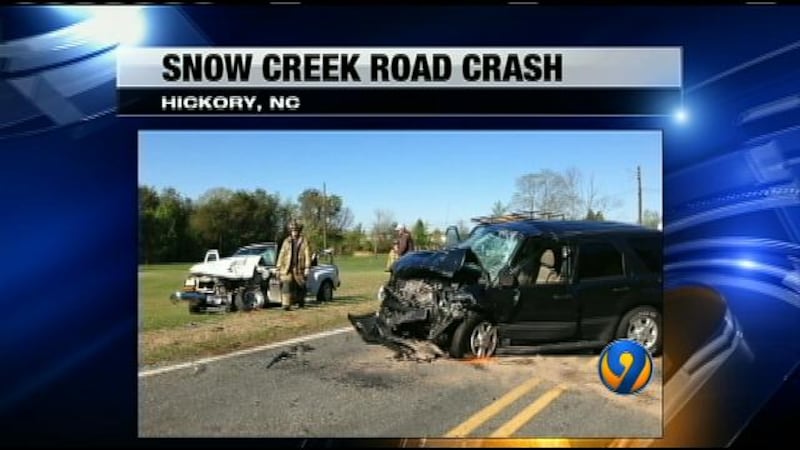Firefighters are worried about saving certain homes.
Firefighters told Action 9 investigator Jason Stoogenke that solar panels on a home's roof can make it more dangerous for them and cost valuable time during an emergency.
Firefighters said they support solar energy, but that panels can slow them down when time matters.
North Carolina now ranks second in the country in solar energy, only behind California.
Cherryville Fire Chief Jeff Cash is the state's representative on the National Volunteer Fire Council.
(VIDEO: Action 9 reporter Jason Stoogenke explains the dangers firefighters face with solar panels on homes.)
He said solar panels are certainly on the radar.
"It can complicate measures," Cash said.
In fact, he already has a handbook on fighting fires on buildings with solar panels even though no one in Cherryville even has solar panels yet.
Fire departments main concerns:
- When firefighters cut power to a house, solar panels can still be electrified.
- Panels make the roof heavier and -- maybe-- more likely to collapse.
- And when firefighters punch holes in roofs to let heat out, panels can get in the way.
Stoogenke asked him if he'd ever wait to send firefighters into a home with solar panels because of those concerns.
"Always. Our number one priority is the safety of our people. Our jobs are to protect lives and property, but not at the expense of firefighter injuries and firefighter deaths," Cash said.
The Solar Energy Industries Association statement:
"The solar industry has always considered the safety of firefighters as a critical priority. There is no question that when there is a fire it is important that firefighters are aware of all the potential hazards that may exist within a structure and exercise the necessary precautions. Making sure the power is off and accounting for solar panels, as well as information about all possible risks at a given site such as natural gas lines or the location of propane tanks or the existence of chemicals is essential.
Solar systems are specifically engineered for each roof and account for weight,
access
and structural considerations when permitted and approved to local building codes. SEIA has been working with various code development organizations such as the International Code Council and National Fire Protection Association to enhance guidelines for installing solar panels to allow for necessary roof access for firefighters and to reduce or eliminate electric shock hazards.
Firefighter access on rooftops:
- To improve rooftop access for ventilation of heat and smoke for homes, recent editions of the International Fire Code and NFPA 1 Fire Code include requirements for wider access pathways and setbacks at ridges. For commercial buildings with low-slope roofs, these fire codes require access pathways around the perimeter of the roof and at intervals no greater than 150 feet. Access is specifically required for smoke & heat vents. SEIA worked with stakeholders, including the International Association of Fire Fighters to propose and have these provisions approved into the model code.
SEIA proposal F85-16 was successfully passed in the last International Fire Code and International Building Code cycle of 2016 and will be effective in the 2018 version of both of those codes; many states are in the process of adopting different passed proposals to the codes (not just the PV ones) as early as January 1,
2018
depending upon the state's intervening code legislation
process / cycle
. For instance, California has already introduced the F85-16 provisions for consideration in their intervening code cycle so that they can be effective January 1,
2018
instead of waiting until 2019.
Developing rapid shutdown systems to facilitate de-energization of solar systems:
- Recent editions of the National Electrical Code (NEC) include requirements for Rapid Shutdown Systems to reduce electric shock hazards for firefighters and other qualified professionals maintaining or servicing solar. Rapid Shutdown functionality allows a single disconnect switch, that is well labeled and visible to first responders, to be present on the structure so that the energy circuit can be manually disconnected.
Overall, the NEC have been improved to require enhanced detection of electrical faults to improve fire safety. Safety standards for testing and certification of equipment have also been improved to provide flexibility of compliance based upon product variation. Conformance with these safety standards is now mandatory in many states including California that enforce to the 2014 edition of the NEC.
The 2017 version has been updated with improvements (such as
labeling/identification
) which we supported just last summer and should be ready for publication later this Fall. Then states can start adopting them as early as January 1, 2018. We are already working as an industry to
develop
more improvements for
rapid
shutdown for the 2020 version.
Structural concerns:
For commercial installations, guidance for structural safety concerns for rooftop solar was pioneered by the Structural Engineers Association of California
(
SEAOC
),
and has since been incorporated into building codes nationwide. Residential photovoltaic systems are generally light in weight relative to the weight of the supporting roof structure.
With respect to rapid system shutdown:
1. SEIA and its member companies actively support the improvement of PV system technology and innovation that provides a safer environment for all workers, users and first responders, including firefighters, who may come into contact with PV systems.
2. To enable technological innovation, SEIA and its member companies encourage the development of multiple options for rapid shutdown system design which can be applied to current systems and further developed for future, smart-enabled systems.
3. To widen the capability for installation, SEIA and its member companies have been working to create multiple solutions for the vast number of installations that need to be considered - such as residential, multi-dwelling, commercial and other structures.
4. As no two buildings are ever exactly alike in construction or performance, the solar industry encourages a multi-pronged approach."
Cox Media Group





